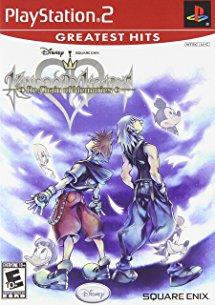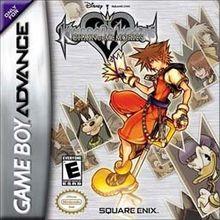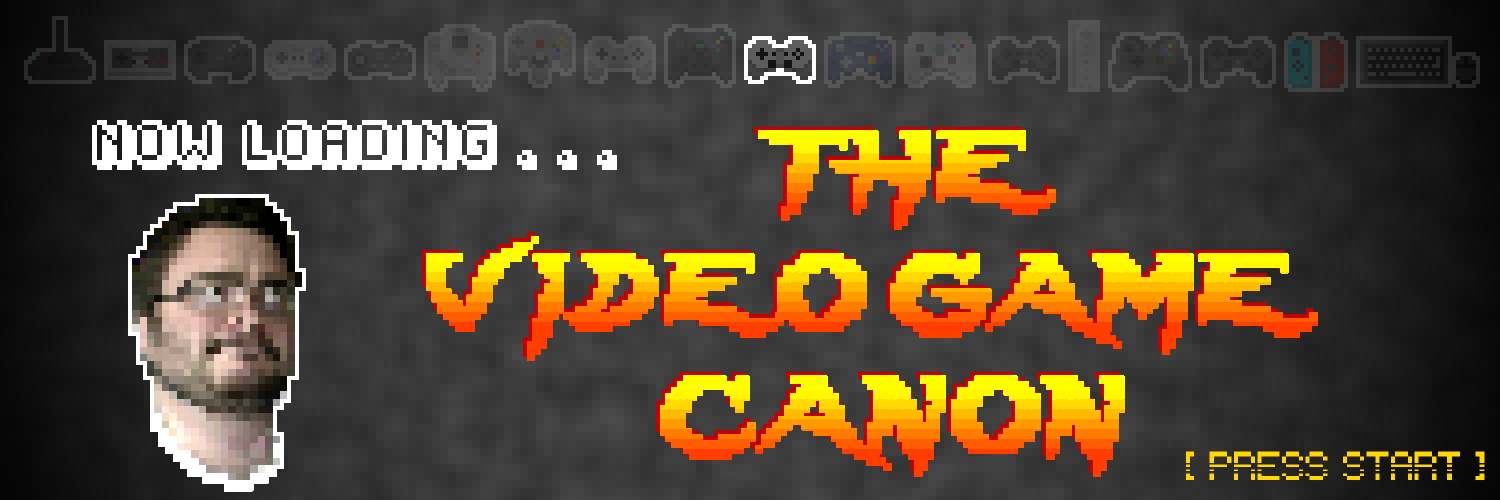
The following is part of Now Loading, a series that renders verdicts on whether or not your favorite video games deserve a place in the canon of works that have contributed to video-game storytelling in landmark ways. Read the series’ full mission statement here.
From the Desk of Daniel Hughes
Letters and Memoirs Volume XIII
RE: Chain of Memories
When you’re an eleven-year-old about to embark on an eight-hour bus ride to space camp, few things are more important to you than buying a new Game Boy Advance game for the trip. You have never been on an eight-hour bus ride before, although you can imagine that sitting in a sweaty coach with twenty other eleven-year-olds whom you may or may not hate being around (you haven’t decided) and who may or may not hate you (you’re pretty sure based on circumstantial evidence) could necessitate a new game that can occupy your attention while heading down to Huntsville, Alabama.
You bike down to Game Crazy, the video game store adjunct to the now defunct Hollywood Video, walk in past the PlayStation 2 and Xbox titles over to the Nintendo area where the GBA cartridges are lined up underneath the glass counter like cuts of beef at a butcher’s. You scan the line of games, dismissing Mario titles and a bunch of puzzle games. You briefly consider Yu-Gi-Oh: The Sacred Cards, but you think better of it. It’s going to be a long bus ride, you think, and you want something with more of a story that you can get lost in while making the long journey down south to space camp. Besides, playing a game with cards might get repetitive after a little while, and you don’t want to bore yourself and be stuck with nothing but watching the October Sky marathon that will no doubt play for the entire trip.
Finally, after rejecting Final Fantasy Tactics Advance and looking past Sword of Mana, your eyes land on Kingdom Hearts: Chain of Memories. Your heart starts pounding, because you had no idea that there was going to be another Kingdom Hearts game, and to find it so suddenly at this Game Crazy before this long trip was exactly what you needed. You ask the clerk to take the game out of the case, and can’t hand over your thirty dollars fast enough. As the kid behind the counter hands you a receipt and places the game you didn’t know you were waiting for into a black Game Crazy bag, he looks at you and says, “Did you play the first one?”
Having spent more time playing the first one than you did doing homework in all of elementary school, you feverishly nod your head, now looking forward to the bus trip so that you can sink your teeth into this new chapter in the Kingdom Hearts story. The clerk chuckles to himself in that way that a sixteen-year-old does when he’s about to mad dunk on an eleven-year-old, hands you the bag, and says, “Have fun playing it again.”
His sarcasm is not lost on you as you walk out of the store, a little disheartened at the prospect that this game that you didn’t know existed a few minutes ago may disappoint you. But what you don’t realize as you’re biking back home is that the game you just bought would not only grip you like the first game did, but it may even entice you more, cementing that this game series will be a part of your life for the foreseeable future. What you don’t realize is that you are about to experience a story that would stick with you for years to come and change the way that you view how stories can be told. You are about to heed that clerk’s snarky words and play that game again and again and again. You are about to rethink how you perceive memory and how fickle it can be. You are about to embark on a journey that is so much larger than the last, and you don’t even know how far it will go. There is so much to learn, and you understand so little.
But you’re about to play Kingdom Hearts: Chain of Memories, and that’s a damn good start.
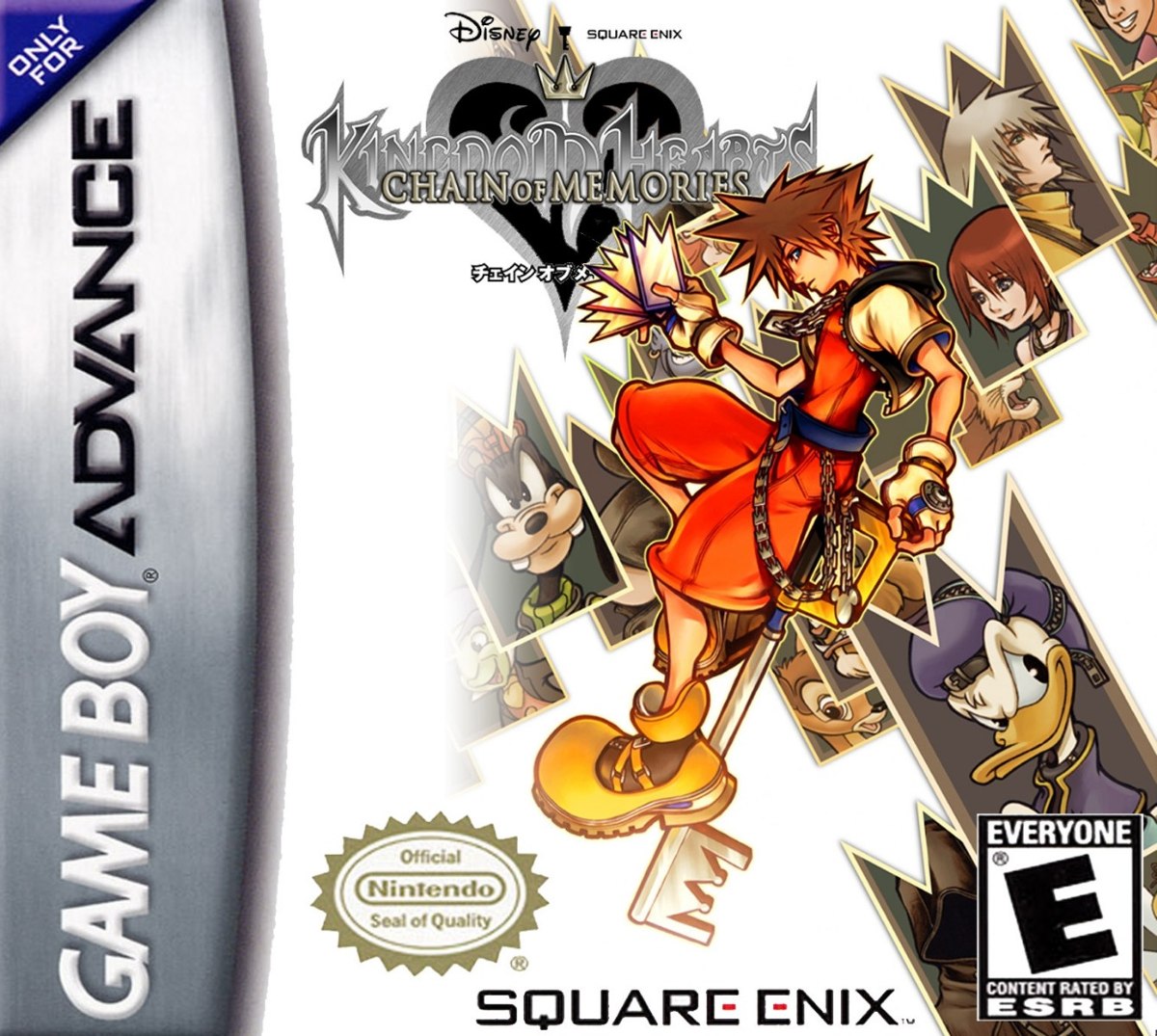
Kingdom Hearts: Chain of Memories is a direct sequel to Kingdom Hearts, released in late 2004 for the Game Boy Advance. Tetsuya Nomura, madman that he is, knew that Kingdom Hearts II would be coming out shortly after the first game had massive success both in Japan and North America, and so he wanted to release a game that acted as an intermediary between the first game and the second game. Not only would it pick up right where the first game left off with Sora and company looking for their friends, but it would also set up the entire framework for the next fifteen years of sequels beyond Kingdom Hearts II.
The game was released on the Game Boy Advance to nearly immediate success, and it reviewed relatively well. As the prescient and pimply clerk from my story alluded, people’s main issues with Chain of Memories came from the fact that it was a rehash of the story from the first game: while it offered some new story beats, many people didn’t feel like these were enough to warrant this weird quasi-sequel to the first game.
While I will admit that its story does seem to drag at first and its card-based combat leaves a lot to be desired, Kingdom Hearts: Chain of Memories is perhaps the most important game for understanding the entire Kingdom Hearts franchise. Not only does this game pave the way for the myriad sequels that follow it, but it also establishes what is perhaps the most absolutely central running theme in the entire series: No matter how you may perceive events, there is always another side, another story.
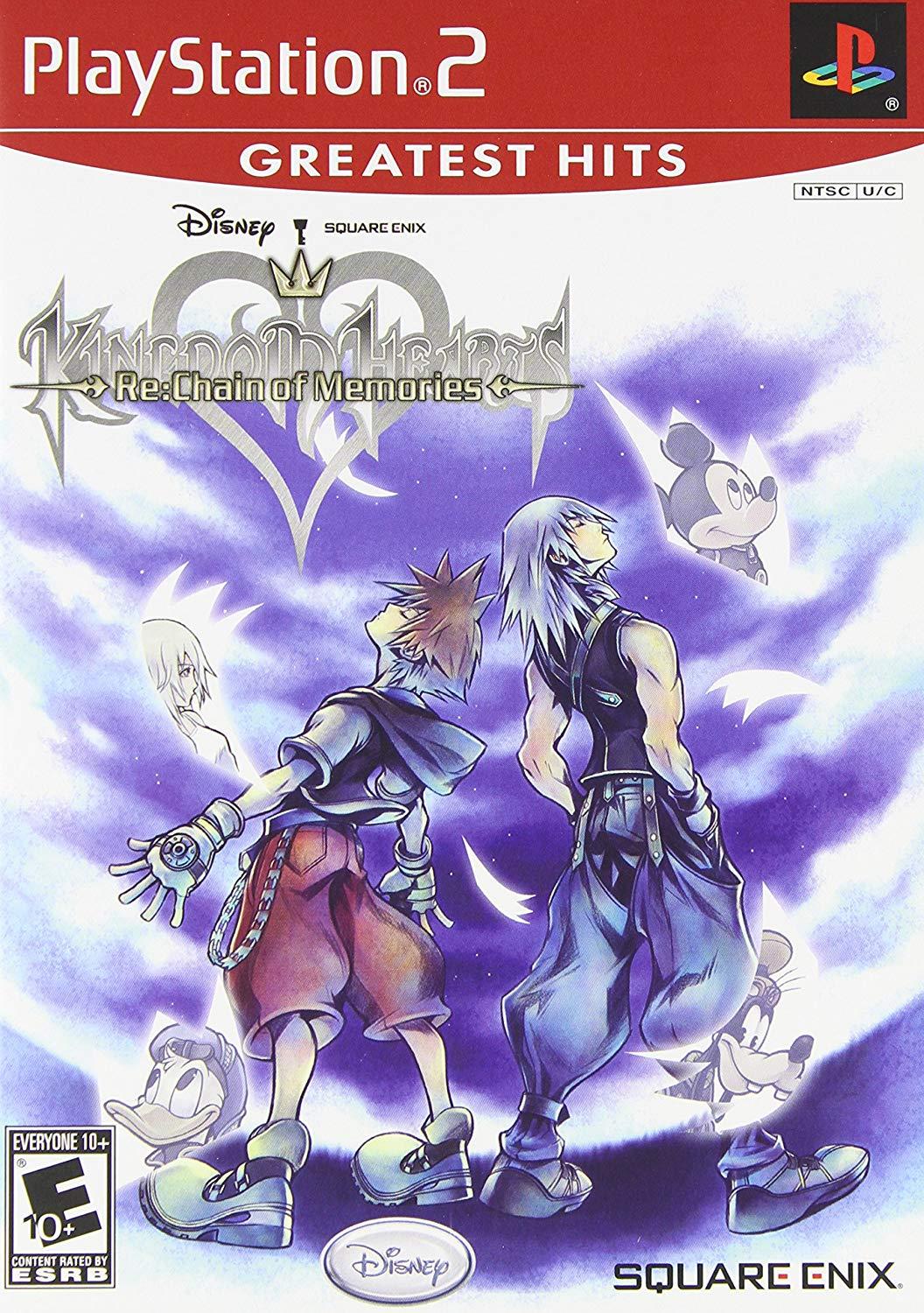
Story and Characters: I Feel Like We’ve Been Here Before…
Let’s get one thing right out of the way so that there’s no further ambiguity on the matter: Kingdom Hearts: Chain of Memories is by no means a rehash of Kingdom Hearts. I’m frankly not even sure how this game got saddled with that description, but I remember that when this title was released, critics and consumers alike complained that it was too much like the first game and offered little in the way of a new story. I’ll demonstrate why this is untrue in my patented story breakdown, but I first want to dissect why people seem to think this in the first place.
The biggest similarity between Chain of Memories and its predecessor, beyond having the same three to five main characters and general story conceit (light good, darkness not-so-good) is that you visit the same Disney-themed worlds. And while it is true that you go to many of the same places as you did in the first game—Agrabah, Olympus Coliseum, and Traverse Town, to name a few—the stories that you encounter in those worlds are entirely different from those in the first game. Whereas the first game’s worlds are all written around the broad conflict between light and darkness and the search for one’s friends, Chain of Memories changes these world’s stories to be more about the nature of memory and how fickle, frustrating, and downright frightening it can be at times. Yes, we see many of the same worlds and characters, but they have all been tweaked in such a way that they serve the overarching narrative and theme of this game, not those of the first one.
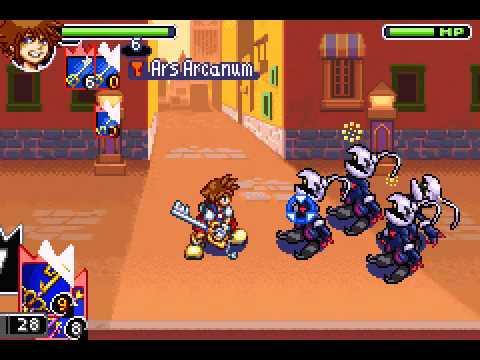
You guys doin’ okay?
I’ll be sure to get more into how this game presents its theming as we go on, but I felt it important to take care of this item of business first. With that bit of housekeeping done, let’s dive right into the story of Kingdom Hearts: Chain of Memories.
We open directly after the events of the first game with our pals, Sora, Donald, and Goofy, searching for Riku and King Mickey after having closed the door to Kingdom Hearts. The gang chases after Pluto, who has a note from Mickey in his mouth, and eventually find themselves at a crossroads where a mysterious hooded figure beckons them toward an even more mysterious castle. This castle, which we eventually learn is called Castle Oblivion, becomes the setting for this game and acts as a sort of hub world through which our characters travel to worlds they visited in the previous game.
When our heroes enter the castle, they remark that they feel a bit different: not only have their appearances changed a bit, but they have also lost all the abilities that they gained from their previous adventures. The hooded figure that brought them to the castle in the first place explains that to enter Castle Oblivion is to relinquish one’s memories; as one ascends the castle floors, one loses more and more memories permanently.
Now, why would anyone do this voluntarily and not instead just turn tail and leave this castle and its creepy denizens to their weirdness? Well, our gang is still looking for Riku and the King, and even though they may lose some memories as they progress through the castle, the hooded figure seems to imply that they will find what they’re looking for if they keep pushing forward.

Desperate to find their friends, Sora and company agree to move forward, adamant that no matter what happens, they won’t forget anything truly important. The mysterious figure then manifests a card from Sora’s heart and tells him to use it on the gateway to the next floor in order to be transported to a world constructed from his memories. Sora and the gang go through the doorway and find Traverse Town, and while they remember where they are, it seems that none of the other characters in the town remember them.
People whom we met in the last game—namely, Leon, Cid, Yuffie, and Aerith—have no memory of Sora and the gang, nor of anything they did together. As far as they’re concerned, this is the first time any of them have met. Sora is initially disheartened by this, wondering how his friends could have possibly forgotten about him. But in his own inimitable way, he pushes through and says that it doesn’t matter if they don’t remember exactly what they did together: what matters is that they still have the same connection that they did before. Sora and the gang defeat the heartless boss from the first game, our Final Fantasy friends bid us farewell, and we leave this reconstructed Traverse Town only to re-enter Castle Oblivion, now one floor higher and a few memories shorter—only to be confronted by another man in a black cloak who’s very excited to meet Sora.
Enter perennial fan favorite and all-around wonderful character Axel, who makes his debut appearance in this game as a mischievous trickster who plants little nuggets of doubt in Sora’s mind as he progresses through the castle. Axel’s entrance is the moment at which we understand not only that this game is not a rehash of the first game’s events, but also that the tone of these games is changing. Whereas the first game was very steeped in fairy-tale and Disney simplicity, the addition of Axel—an edgier, darker antagonist than any we encountered in the first game—lets us know that the stakes are being raised and that there are greater, more sinister forces in the world that we don’t yet know about.
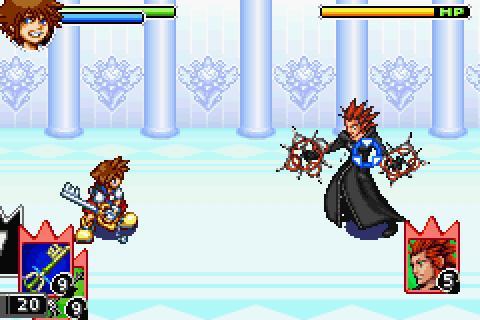
“I’m not goin’ anywhere.” – This Character, Fifteen Years After This Appearance
Axel’s appearance also introduces us to the fact that that guy in the black hood who started us on this journey is not alone: there seems to be a whole group of people conspiring against Sora and company for an as-of-yet unknown purpose. The placement of Axel’s introduction after the journey through Traverse Town lets us know that the comfortable familiarity of the first game and its paradigms are a thing of the past: there’s a new threat to worry about.
You battle Axel for the first time, and afterward, he taunts you for having forgotten something truly important. Not only has Sora forgotten, he chides, but he’s also forgotten that he’s forgotten, which must mean he’s a pretty careless guy. The seeds of doubt are planted not only in Sora’s mind, but in the mind of the player as well. Sure, we went through the events of the first game just as Sora did, but if there’s something that even Sora doesn’t know he forgot, how can we, as players following Sora, know for certain what’s true and what isn’t? In one fell swoop, Axel charges in, sets up the plot for the game, and strips our narrator of his reliability. And if we can’t be sure of Sora’s recollection of events, how does that change ours?
Sora and company continue to progress through the castle, revisiting old worlds from the previous game but with no memory of having been there. These levels are presented as entirely new to Sora, Donald, and Goofy; however, while neither our main characters nor the characters with which we interact in those worlds have any memory of meeting or going on adventures, we, as the player, still remember what happened in the first game. This memory that we have distances us from Sora in an important way: as we progress through the castle, not only does Sora’s memory of events continue to fade, but our connection to him as a character changes because we retain knowledge that he no longer does.
And here we have the issue of multiple Soras come into play: we remember the Sora from the last game, but are also following this new version of him who is slowly morphing into someone with whom we are not as familiar. As we continue through the castle, Sora starts to remember that there was another girl who was on Destiny Islands with himself, Riku, and Kairi, and that they all used to play together before the world disappeared. His memories aren’t entirely back, but he starts to remember bits and pieces of her as he and his friends start making their way to the top of the castle.
Just as he is ruminating on this with Donald and Goofy, another person in a black cloak appears to taunt him. This time, it’s a woman named Larxene who berates Sora not only for forgetting this person with whom he grew up, but also for not being able to remember her no matter how hard he tries. What kind of horrible person just forgets someone that important, she chides, rushing towards him. She knocks Sora over, and out falls a star-shaped charm that looks awfully like the one that Kairi gave him in the last game. After seeing this charm, Sora remembers that the other girl’s name was Naminé and that she was very important to him back when they were younger.
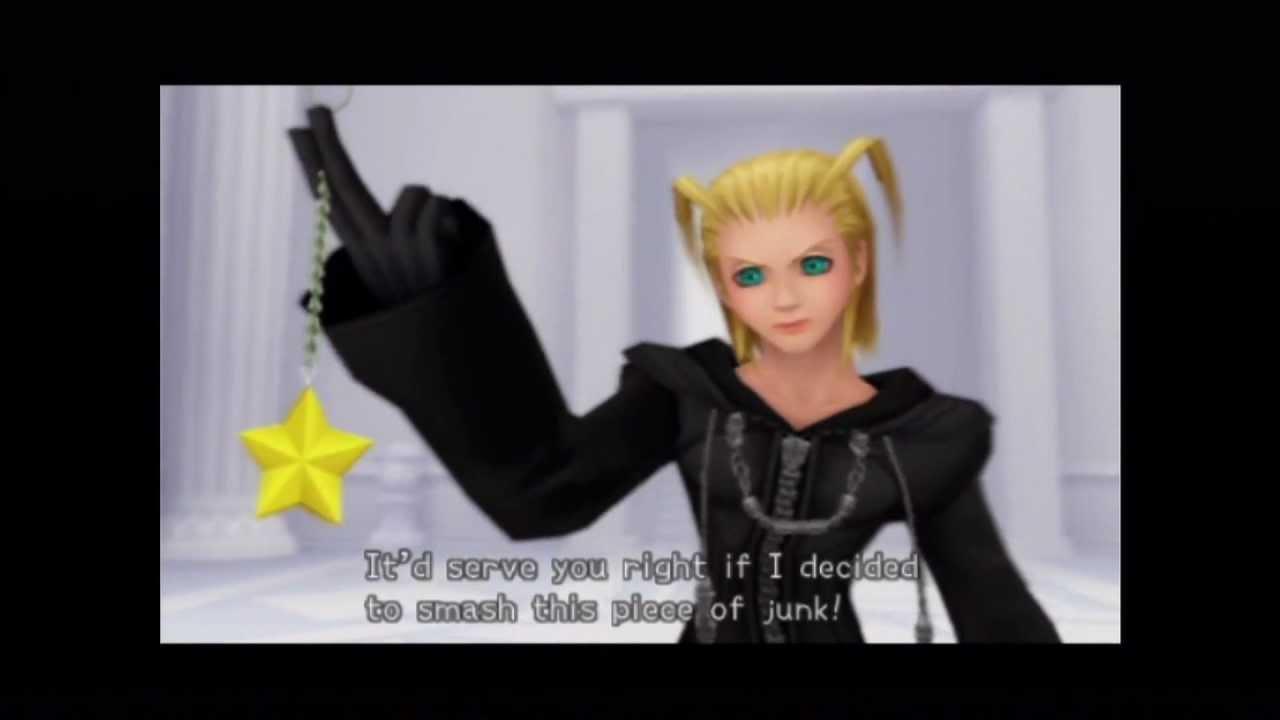
And here’s where things get even further muddled—not only for our young hero, but also for us as the player. At this point in the story, we are privy to a few things.
- We know from the first game that Sora, Riku, and Kairi were all friends from childhood and grew up on Destiny Islands together. It’s certainly possible that there was another girl who grew up with them whom we weren’t aware of in the first game, but considering we’re progressing through a castle that literally removes your memories, it seems a bit strange that Sora would be remembering this Naminé person now.
- What’s stranger is that as we keep moving forward through the castle, Sora begins to forget Kairi entirely, and supplants her memory with that of Naminé. Now the divide between main character and player becomes even greater, because we now know that something nefarious is happening to our main character and that he is unable to see it given the circumstances of Castle Oblivion. We are now no longer with Sora every step of the way like we were in the first game: we are at odds with him, waiting for the moment that he remembers what we know to be true.
Eventually, Sora and company are suddenly reunited with Riku on one of the higher floors of the castle. While you would hope this reunion would be a happy one after the whole “saving the world” thing that happened not a week ago, Riku is pretty bitter towards Sora for having forgotten who Naminé was and how important she was to them. Riku transforms into the dark form he used to fight Sora in the first game, and a battle ensues. Sora and the player are now equally baffled because, for all we knew, Riku had turned over a new leaf at the end of the last game—yet here he is, attacking you again out of jealousy and resentment.
We later learn that this “Riku” is something called a Replica and was constructed by another of these black-cloaked people named Vexen to further mess with Sora’s head. We’ll get into this more later on, but for now what’s important to note is that these people in the black cloaks are hellbent on manipulating Sora in any way that they can, including creating an exact replica of his friend Riku to try to cement that his memories are unreliable.
Finally, we come to one of the later floors in the castle and visit a world called Twilight Town. This world is new to both Sora and the player, as it wasn’t in the first game. The world is supposedly created from “the other side of Sora’s heart”—a cryptic statement at this point in the story, but nonetheless important to recognize because it further reinforces the fact that there are things that Sora does not know about himself. Whether this is a trick of the people in the black cloaks or whether it’s real is rather unimportant at this point because either way, it is letting the player know there is much more going on in the world of Kingdom Hearts than we have even begun to understand from Sora’s limited perspective. It would seem that Ansem was right after all when he told us how little we understood.
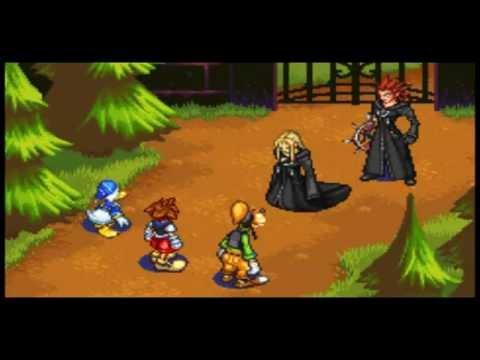
Everything comes to a head when we reach the top of Castle Oblivion and we meet the hooded figure from the beginning of the game. He is revealed to be a man named Marluxia, who, we have learned, oversees the other cloaked characters in Castle Oblivion. He explains that Naminé has the power to manipulate memories and that she has been deleting and reconstructing Sora’s memory so that he believes that she, not Kairi, was his childhood friend. We come to understand that at this point in the game, riddled with false memories, Sora has actually forgotten all that had happened in the first Kingdom Hearts game: all the people he met, all the adventures he had, and, most importantly, that Kairi ever existed in the first place.
And here we come to Marluxia’s ultimate plan, the reason that he had Naminé do this to Sora in the first place. After Naminé completely revamped Sora’s memories to make him think that she was his childhood friend in place of Kairi, she effectively gained complete control over him. Marluxia then wanted her to shatter Sora’s memory, making him an empty shell that he could control like the Riku Replica from earlier. Without the will that comes with memory, the Keyblade wielder could be bent to Marluxia’s whims.
Marluxia is often considered to be one of the lesser Kingdom Hearts villains, but his plan and motive as presented in this game constitute one of the more compelling character-driven schemes in the series. Marluxia is obsessed with memory and how it relates to people’s hearts, and he believes it to be an incredible weakness in people. After all, look at how easily Sora was manipulated by Naminé and how quick he was to believe in false memories. These binds, these chains of memory that keep people connected, are a nuisance to Marluxia, and he would sooner dismiss the heart and its connections to other people than make himself vulnerable to that kind of weakness. His appearance in the series is relatively brief, but he provides a nuanced look at what the series ultimately considers to be a good thing, turning it on its head as he asks what exactly memory is good for if it can be so easily changed.
For a game that has been making the player question her own memory of events, there could be no better villain than someone who sees memory as a danger to those who cling to it.
Marluxia commands Naminé to shatter Sora’s memories, but Naminé resists, saying that if she did that, it would destroy Sora. Marluxia tells her that if she doesn’t do what he says, he’ll kill her, and so Sora interjects and tells Naminé to do it. His memories, he argues, are less important than the promise he made to take care of her—and those memories, he insists, can always be pieced back together over time with the help of his friends. Donald and Goofy speak up and say that they’ll do the remembering for Sora, and that, no matter what happens, they won’t let anything happen to Naminé.
Here again is a core Kingdom Hearts theme that finds its origins in this game. Memory is fickle to begin with, and it can be changed and manipulated over time into something that doesn’t even remotely resemble the events that truly happened. And yet, even though nothing that Sora remembers is objectively true, it is true to him, and it has consequences for those around him right now. So, even if the memories are fake, the feeling that he has at this moment in time is real, and that’s all that matters.
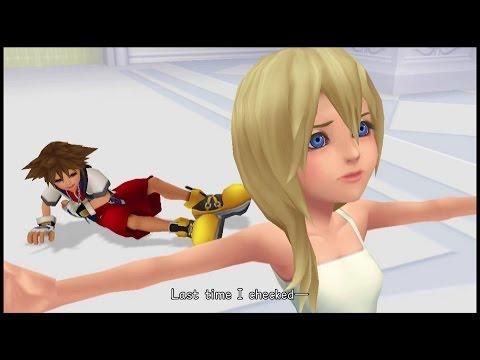
As we’ve seen through this whole story, memory is so fragile, and it can be questioned and picked apart. The player remembers things differently from Sora in this game, and yet the fact of the matter is that something needs to be done to save Naminé; even if the moments leading up to our meeting her are suspect or untrue, that wouldn’t change the fact that the right thing needs to be done. The final fight begins, with Sora squaring off against Marluxia.
Once Marluxia has been defeated, Naminé tells Sora that he has a choice to make. He can either keep all the memories that she implanted in his heart, or she can piece his old memory back together so that he can remember everything that happened to him in the first game—and, more importantly, so that he can remember Kairi. She cautions him that by doing this, he will forget everything that happened in Castle Oblivion, and will not remember Naminé when he wakes up.
Sora is conflicted by this because he made a promise to protect Naminé no matter what happens. However, he also made a promise to Kairi, and knows that he needs to remember everything else so that he can keep that promise, too. Naminé understands and puts him into a sleeping pod where she can restore his memory to what it was before he entered the castle. Before going to sleep, Sora promises that after he wakes up, he’ll find Naminé again and they can build real memories together. Naminé smiles and tells him to look at the good luck charm that she gave him. When he reaches for it, it looks again like the one that Kairi gave him in the first game; just before Sora goes to sleep, he remembers Kairi’s name.
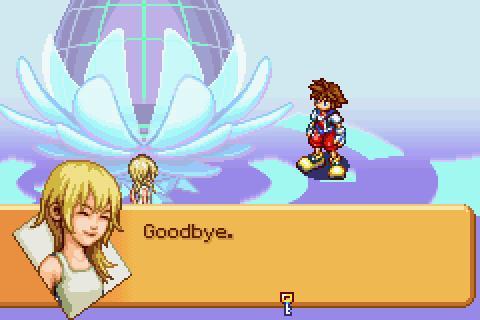
“Forever, I’m sure.”
So ultimately, Kingdom Hearts: Chain of Memories is about the nature of memory and how it can change so easily as we go through life. The way the game plays around with Sora’s memories not being quite what they seem makes the player question her own memory, wondering whether something is amiss or whether there was something left out of the first game that we weren’t privy to knowing until playing through this story. The game also attempts to rewrite or change your own memory of the first game by taking you through the same worlds again, changing the events slightly, and theming those events around the concept of memory, forgetting, and remembering. It shows that there is a multitude of different perspectives one can have on different events, and that there are always two sides to—OH WAIT THAT’S RIGHT HANG ON—
Story and Characters: Reverse/Rebirth
That’s right, you thought that the game was over when Naminé put old Sora in that dumb sleeping pod, but nah, baby, there’s a whole other story to play through—and this time, it’s from Riku’s perspective!
Yes, after Sora’s story through Castle Oblivion ends, the game starts over and you are playing as Riku directly after he and King Mickey closed the door to Kingdom Hearts from the world of darkness. I’ll be quicker about this synopsis because, although it adds a lot of important things to the story, it is a bit briefer than Sora’s story.
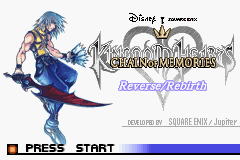
Riku wakes up and hears a voice calling out to him, telling him to find his way to the darkness. Riku walks through a doorway and finds himself in Hollow Bastion, the world in which he woke up after the Destiny Islands were destroyed at the beginning of the first game. He starts walking through the world, and we start to notice that Riku’s game is very different from how Sora’s game worked. In Sora’s story, you met people in the world as you walked through them, you had different adventures, and you made new memories; in contrast, when Riku travels through these worlds, he meets no one but the heartless and the villains whom you faced in the first game.
Riku begins to question why the worlds are so empty—and who should show up at that point but Ansem, Seeker of Darkness, alive and well and ready to tempt our boy again.
Ansem explains that when Riku first traveled through these worlds, he blocked his heart off to anyone and everyone, for he was only concerned with himself and finding more power through the darkness. Riku understands this to be true, but he does not want to be alone anymore. He presses onward through the different worlds until he starts running into some other hooded figures.

“Well…”
As we progress through Castle Oblivion as Riku, we realize that he’s not losing his memories like Sora was in his story. Instead, he’s on more of a quest for self-discovery as he continues to encounter Ansem and confront the darkness within himself. Riku eventually realizes that the darkness he embraced in the last game is a part of him: while he does not want to be consumed by it, he doesn’t want to be afraid of it, either. This ultimately leads to him confronting Ansem again and turning down his offer to completely embrace the darkness. Riku instead says that he will walk the path of twilight, using these dark impulses to fight for the light.
Riku also meets Replica Riku along the way, which serves to reinforce this literal inner turmoil that Riku is experiencing. Replica Riku is all for embracing the darkness, and he thinks that he is stronger for having done so. However, Riku knows that no matter how often he embraced that loneliness and solitude, he was always beaten by Sora, who extolled the importance of connections and friendship. This game is an important step in Riku’s story as he walks the path to redemption and hopes to not only atone for his past mistakes, but also to use them to help the people he cares about.
There is not much more to say about Reverse/Rebirth’s story, as it is a straightforward look into an antagonistic character from the first game coming to terms with his own inner demons and pushing past them. What’s more important for the overall story, I find, is that this journey with Riku further exemplifies that there is so much more going on in this world, from so many different perspectives. In Sora’s story, we get the added perspective of a Sora who believes he has experienced something different from what we saw him experience in the first game, and then Reverse/Rebirth comes along and provides us with an entirely new viewpoint on events from a character we had fought against in the last game.
Everyone has a story to tell in Kingdom Hearts. There is always another side, another story.
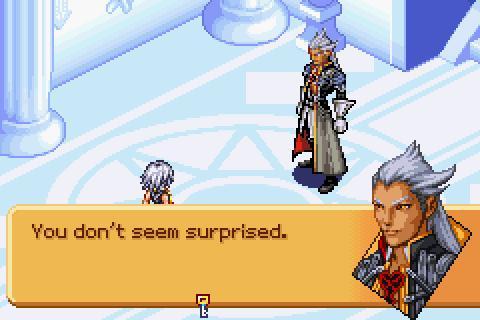
“Nope, and likely never will be again. See you eight more times!”
Gameplay, Music, and Visuals: Is This My Card?
Boy, that is one of the longest story sections I have written in a long time. You figure that’s going to happen with Kingdom Hearts, but still. Man, oh man, and this is one of the more straightforward titles in the series, too.
At any rate, I think the benefit of writing that much about the story is that I set up a lot of what this game does well with its theming. Luckily the gameplay is pretty good about reinforcing those same themes, so let’s jump in.
Chain of Memories is an action RPG, but the way that combat occurs is somewhat unusual: you have a deck of cards with each card representing a different attack. You have weapon cards, magic cards, item cards, and summon cards, and each of them has a number between 0 and 9 that determines how effective they will be in combat. The heartless and other enemies have their own cards between 0 and 9, and if you play one that is higher than theirs, you land a successful attack. You can also merge cards together to perform “sleights,” or special attacks with stackable effects.
While that’s an easy enough combat system to understand, it is undeniable that it is a clumsy one.
Especially when you’re coming off the fast, fluid combat of Kingdom Hearts, having to cycle through a deck of cards to find the exact attack you’re looking for and then play a game of numbers chicken with the enemy adds a lot of time and frustration to what used to be a fun combat system. There are times when the card system is fun and adds a level of strategy to the game that the previous title didn’t have, but it’s often more trouble than it’s worth to set up complicated card combos. In practice, that means you may tend to just keep mashing the cards together until you find the ones that beat the enemy’s cards. These combat problems are not game-breaking, but they do make the whole system feel clunky and underdeveloped at times.
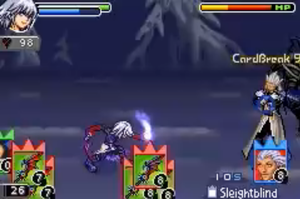
That being said, in a game that has a story exploring the strength of memory and the importance of holding onto some things and letting go of other things, I will say that there is some slight narrative significance to putting that kind of thought into your attacks. What’s more, if you perform certain attacks too often in a battle, you can lose the ability to call those cards back and use the attacks again—something not totally unlike repeatedly reaching for memories only to watch those memories degrade over time. It may not be perfectly integrated, but you can see that there was thought put into tying the battle system into the overarching narrative.
The music is again composed by Yoko Shimomura, and although it is a more limited soundtrack due to the Game Boy Advance’s capabilities, the music is very well implemented and provides some of the more memorable tracks from the series. The Castle Oblivion theme is haunting in a way that no track from the first game was, setting the tone for this mysterious, off-putting environment from the very start of the game.
It should also be said that along with Axel’s debut into the series, the theme that would go on to be his theme song, “The Thirteenth Struggle,” made its first auditory appearance in this game. Just as Axel is a breath of fresh air and an introduction to what the series would become in later installments, hearing “The Thirteenth Struggle” for the first time is like entering an entirely new world. The same can be said of the final boss theme, “The Lord of the Castle,” which is as catchy as menacing as it is melancholy.
If I don’t say it a million times before I’m dead, Yoko Shimomura is perhaps the greatest living video-game composer, and I will fight you about it.
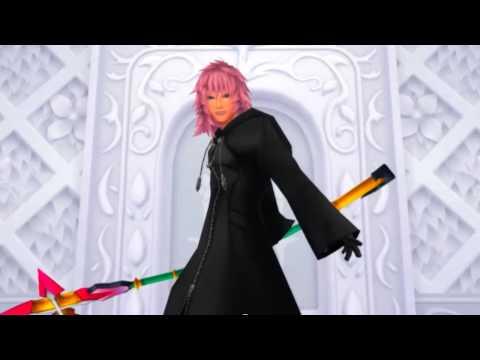
Lastly, I want to pay special attention to the visuals in this game, as they serve as a great reinforcer of the themes that we discussed in the story section. The most notable aspect of this game’s visuals is that the game is presented on a Game Boy Advance, and so the screen is much smaller than that of a television on which you’d be playing a PlayStation 2. The result is a much more intimate experience because of how physically close you are to the story.
Seeing these familiar characters turned into GBA sprites and walking through these condensed versions of worlds we’ve already been to is a brilliant way of not only utilizing the hardware on which the game was released but also emphasizing to the player that although these visuals are familiar, they are inherently very different because of how they are being presented to you. You’re already approaching the game from a different physical angle, and so you are primed to approach the story from a different angle as well.
For a game that served as an intermediary title bridging the gap between two PS2 releases, Kingdom Hearts: Chain of Memories does a fantastic job of presenting a world that is at once familiar and completely different from what the player became accustomed to while playing the first game.
Impact on Video Gaming and Culture: Setting the Stage
Chain of Memories was a modest hit as soon as it was released, and for good reason. The game was received well enough by critics and fans, and it did an excellent job of piquing interest in the sequel that would be coming out just over a year later. It also took the series from a fun little romp with Disney and Square Enix characters and slowly blossomed it into a story all its own, with characters and plotlines that were unique to the world it had established in the first game.
This game showed us that Kingdom Hearts would not be about merely visiting Disney worlds and meeting up with Final Fantasy characters. This series had the potential to do interesting and creative things with the world and rules it had set up in the first game, taking them in totally new and interesting directions that allowed them to explore ideas that were a bit deeper and more philosophical than the simple “good versus bad,” “light versus darkness” concepts. Right out of the gate, Chain of Memories started asking deeper questions about memory, existence, and how we perceive ourselves in our own minds. What does it mean to have false memories? How does it impact your life? If you were told that the memories you’ve been acting on were not real, how would you proceed from there?
Chain of Memories proved that these games can have more depth than people initially give them credit for, and it showed Tetsuya Nomura and the other creators that people would appreciate a deeper, more Final-Fantasy–esque plot in a Kingdom Hearts game. While that may have come back to bite them later on in the series, it was certainly an exciting prospect at the time that not only set the stage for Kingdom Hearts II, one of the greatest games in the series (if not the greatest one, full stop), but also allowed for creativity to spread beyond a simple Disney-Square Enix mash-up. And, of course, it warranted a completely revamped and remastered re-release onto the PS2 eventually.
Speaking of which…
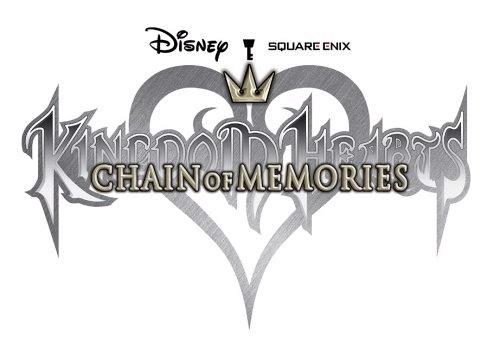
BONUS LEVEL: Remixes, Re-Releases, and RE: Chain of Memories
Well, my lovelies, this is where I pull the wool away from your eyes and reveal that I’ve been playing something of a trick on you this entire time.
You’ll notice that for the majority of this article, I had been referring to the Game Boy Advance version of this game, and while everything I said about the gameplay, music, and visuals is all still true about that original game, keen-eyed observers among you may have noticed that I slipped a moment or two into the story section that were actually from Re: Chain of Memories, the PlayStation 2 port of this game that came out in 2007!
Aha! I’ve fooled you all! And for analytical reasons, no less!
I know that there was no shortage of re-releases of Kingdom Hearts titles over the years in anticipation of Kingdom Hearts III, but this port from the GBA to the PS2 is one of my favorites in the entire series because of how well it reinforces the entire point of the game as I see it. Like I said earlier, memory is fickle and subject to many changes, and here we have a game that was re-released and completely remade to fit onto the PS2; with that transition came voice acting, better cutscenes, updated combat, and, of course, minor changes to lines and scenes that make you question how things may have happened in the first place.
And to be brutally honest with you, Dear Reader, that anecdote I told you at the start of this article? I’m not even sure if that’s one-hundred-percent how it happened. I certainly remember every part of it in the way I wrote it, and when I think back to it in my mind, that’s exactly how it happened. Just like when I play Re: Chain of Memories on my PS4, I think back to when I played the first version of this game on that bus to space camp and consider it to be more or less the same experience. Yes, the particulars may be different, and the quality of the images in my mind have changed over time, but at the end of the day, it’s not the exact events happening exactly as they did the first time that matters: what matters is the way I remember those events now and how it informs my opinion of things going forward.
Just like Sora’s promise to Naminé, it may be a little different than how I remember it, but it still means a great deal to me.
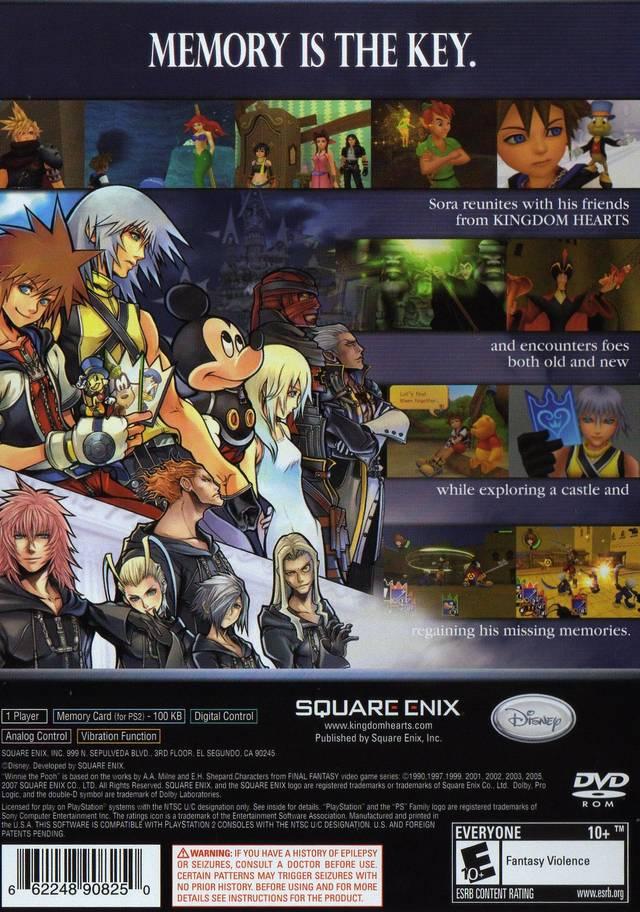
VERDICT: Got It Memorized?
I have had such a good time going back and playing through this game, remembering all the different times I’ve played it over my life. I’ve found, too, that in the wake of Kingdom Hearts III’s release, the series owes a great deal of its prominence to things that happened in Chain of Memories. It continued where the first story left off in a spectacular way, holding on to what made that first game special and expanding on its themes in a way that only the best sequels can. It introduced new characters and game elements that not only told a great story within the confines of this game but also set the stage and added intrigue to the games that would come after it.
Chain of Memories is a brilliant look at how we perceive our own stories, inviting us to consider how adding different perspectives and viewpoints to our memories will irrevocably change them. Whether that’s a good or bad thing is left up to you, and one can only hope that the feeling that remains after remembering something is enough to act upon.
So with that, I welcome Kingdom Hearts: Chain of Memories into the Video Game Canon, and I can’t wait to go back to it again and again.
